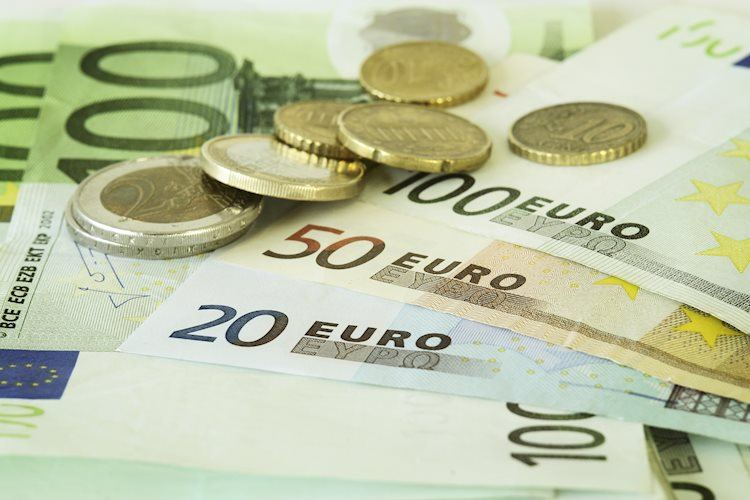- The Euro keeps the selling bias unchanged vs. the US Dollar.
- European stocks trade with decent gains across the board.
- Final Inflation Rate in Germany matched the flash readings.
The Euro (EUR) continues to face pressure against the US Dollar (USD), causing EUR/USD to move lower and establish new weekly lows in the vicinity of 1.0660, where some initial support seems to have turned up so far on Wednesday.
Meanwhile, the US Dollar is strengthening further, pushing the USD Index (DXY) to trade close to the 106.00 level. This is primarily driven by ongoing concerns about overall market risk and mixed performance in US bond yields across the curve.
In terms of monetary policy, there is a growing consensus among market participants that the Federal Reserve (Fed) is likely to keep its current monetary stance unchanged for the time being. The possibility of an interest rate adjustment in December has lost some momentum, especially after the recent FOMC meeting and the release of weaker-than-expected Nonfarm Payrolls data for October (+150K jobs).
A similar sentiment can be observed regarding the European Central Bank (ECB), as investors currently lean towards an extended impasse in its tightening measures, most likely until the latter part of next year.
On the Euro’s calendar, the final inflation rate in Germany showed CPI rising 3.8% YoY in October and coming in flat on a monthly basis. In the euro region, Retail Sales contracted 0.3% MoM in September and 2.9% over the last twelve months.
Across the pond, usual Mortgage Applications measured by MBA are due seconded by Wholesale Inventories. In addition, investors are expected to closely follow the speech by Chair Jerome Powell, especially amidst growing chatter about potential rate cuts by the Fed as soon as in the summer of 2024 vs. the persevering tighter-for-longer narrative seen in some Fed speakers.
Later in the session, NY Fed John Williams (permanent voter, centrist), FOMC Governor Michael Barr (permanent voter, centrist) and FOMC Governor Philip Jefferson (permanent voter, centrist) area all expected to speak as well.
Daily digest market movers: Euro’s looks at Powell for a potential rebound
- The EUR comes under extra pressure vs. the USD.
- US and German yields trade in a mixed fashion so far.
- Markets see the Fed maintaining its monetary policy intact in December.
- An extended pause appears likely by the ECB until H2 2024.
- ECB’s Martins Kazaks did not rule out further tightening.
- ECB’s Gabriel Makhlouf deemed as premature talks about rate cuts.
- ECB’s Pierre Wunsch suggested the economy maybe entering a stagflation phase.
- Geopolitical worries in the Middle East remain well in place.
- Focus is expected to be on Chair Powell’s speech.
Technical Analysis: Euro’s outlook points to extra losses below 1.0800
EUR/USD corrects lower and revisits the sub-1.0700 zone on Tuesday.
The continuation of the selling pressure could force EUR/USD to initially revisit the weekly low of 1.0495 (October 13), ahead of the 2023 bottom at 1.0448 (October 15) and the round number of 1.0400.
On the upside, the immediate resistance emerges at the November high of 1.0754 (November 6) prior to the key 200-day SMA at 1.0802 and another weekly top of 1.0945 (August 30). North from here aligns the psychological threshold of 1.1000 before the August peak of 1.1064 (August 10) and the weekly high of 1.1149 (July 27), all preceding the 2023 top of 1.1275 (July 18).
So far, the pair’s outlook is expected to remain bearish as long as it trades below the 200-day SMA.
Interest rates FAQs
Interest rates are charged by financial institutions on loans to borrowers and are paid as interest to savers and depositors. They are influenced by base lending rates, which are set by central banks in response to changes in the economy. Central banks normally have a mandate to ensure price stability, which in most cases means targeting a core inflation rate of around 2%.
If inflation falls below target the central bank may cut base lending rates, with a view to stimulating lending and boosting the economy. If inflation rises substantially above 2% it normally results in the central bank raising base lending rates in an attempt to lower inflation.
Higher interest rates generally help strengthen a country’s currency as they make it a more attractive place for global investors to park their money.
Higher interest rates overall weigh on the price of Gold because they increase the opportunity cost of holding Gold instead of investing in an interest-bearing asset or placing cash in the bank.
If interest rates are high that usually pushes up the price of the US Dollar (USD), and since Gold is priced in Dollars, this has the effect of lowering the price of Gold.
The Fed funds rate is the overnight rate at which US banks lend to each other. It is the oft-quoted headline rate set by the Federal Reserve at its FOMC meetings. It is set as a range, for example 4.75%-5.00%, though the upper limit (in that case 5.00%) is the quoted figure.
Market expectations for future Fed funds rate are tracked by the CME FedWatch tool, which shapes how many financial markets behave in anticipation of future Federal Reserve monetary policy decisions.
Read the full article here

